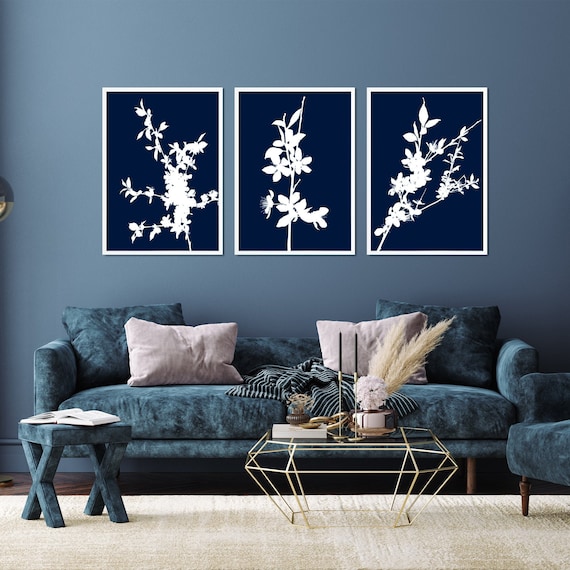Blue wall decor can instantly elevate your home’s atmosphere, adding tranquility and elegance. In this guide, we will delve deep into different styles, ideas, and tips for incorporating blue into your home decor.
Understanding the Psychology of Blue in Home Decor
Blue is a color that resonates with calmness and tranquility. It’s known to lower heart rates and promote relaxation. In my experience, painting a room in shades of blue transformed my home office into a serene sanctuary where I could focus and create.
Popular Shades of Blue for Wall Decor
1. Navy Blue
Navy blue is a classic and sophisticated choice. It pairs well with metallic accents and warm wood tones.
2. Sky Blue
Sky blue creates a refreshing atmosphere and is perfect for spaces like bedrooms and bathrooms.
3. Turquoise
This vibrant hue adds energy and vivacity, making it ideal for creative spaces or accent walls.

4. Powder Blue
Soft and understated, powder blue is perfect for a calm and inviting environment.
Comparison Table of Blue Shades
| Shade | Vibe | Best For |
|---|---|---|
| Navy Blue | Sophisticated | Living rooms, home offices |
| Sky Blue | Refreshing | Bedrooms, bathrooms |
| Turquoise | Energetic | Creative spaces, accent walls |
| Powder Blue | Calm | Nurseries, bedrooms |

Incorporating Blue Wall Decor Into Your Home
Accent Walls
Creating an accent wall with blue paint can add depth and interest to a room. When I added a navy blue accent wall in my living room, it became the focal point of the space.

Wall Art
From canvas paintings to prints, wall art in varying shades of blue can tie your decor together. Look for pieces that resonate with your personal style.
Wall Decals
Wall decals are a fun and temporary way to introduce blue to your walls. They come in various designs and can be easily removed whenever you want a change.

Framed Photos and Gallery Walls
A gallery wall featuring blue frames can add a personal touch while maintaining the color theme. Mix family photos with decorative prints for a balanced look.
Pros and Cons of Blue Wall Decor

Pros
- Creates a calming atmosphere
- Versatile and can be paired with many colors
- Available in a variety of shades
Cons
- Can make a space feel smaller if used excessively
- Some shades may clash with existing decor
- Maintenance required for painted walls

Tips for Choosing the Right Shade of Blue
Choosing the right shade of blue is crucial to achieving the desired mood. Here are some tips based on my personal experience:
1. Consider Lighting
The amount of natural light can affect how a color appears in a space. Test paint samples in different lighting conditions.
2. Sample Before You Commit
Always try paint samples before making a final decision. I once painted a swatch of a light blue that looked beautiful on the chip but appeared too stark in my living room.
3. Match with Existing Decor
Ensure your chosen blue complements existing furniture and decor. If you have warm wood tones, consider a warmer shade of blue.
Integrating Blue Decor into Different Rooms
Living Room
Incorporating blue furniture or pillows can create a cohesive look without overwhelming the space. A blue throw blanket over a neutral couch adds a pop of color.
Bedroom
Soft blues are perfect for bedrooms. Try using blue bedding or wall art to promote relaxation and tranquility.
Kitchen
Consider blue kitchen utensils or decorative pieces for a cheerful vibe. Blue tile backsplashes can also make a stunning statement.
Office
Use blue wall decor to foster a productive work environment, as it can enhance focus and creativity.
FAQ about Blue Wall Decor
1. What colors pair well with blue wall decor?
Blue pairs beautifully with white, gray, cream, and earth tones. Accent colors like yellow or gold can also create a stunning contrast.
2. How do I maintain blue-painted walls?
Regular dusting and gentle cleaning solutions can help maintain the vibrancy of blue walls. Avoid harsh chemicals that may fade the paint.
3. Can I use multiple shades of blue in one room?
Absolutely! Mixing different shades of blue can create depth and interest. Just ensure they complement each other well.
4. Is blue suitable for small spaces?
Yes, lighter shades of blue can make a small space feel airy and open. However, darker shades should be used judiciously to avoid a cramped feeling.